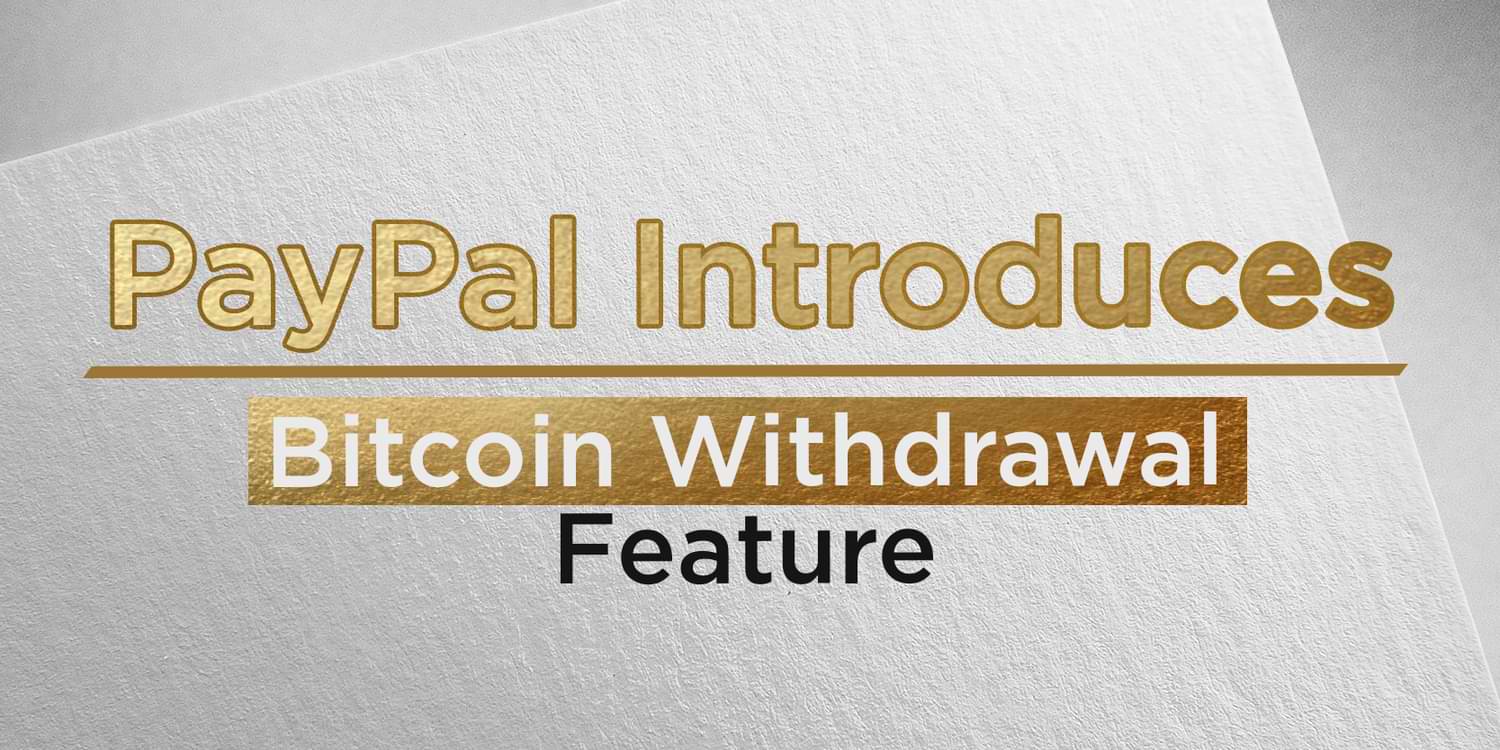
PayPal Introduces Bitcoin Withdrawal Feature
PayPal recently announced that users would soon be able to withdraw their cryptocurrency holdings wallets off-site. This new feature, announced today at a developer conference in San Francisco, will allow Bitcoin users to spread their cryptocurrency beyond the confines of PayPal’s payments app.
This marks one more milestone for PayPal Holdings Inc., whose quest is to become a global, cross-border payments leader.
Paypal's Entry Into The Cryptocurrency Sphere
PayPal finally launched its cryptocurrency wallet service in October of 2020, allowing millions of users in the US to hold popular coins, including Bitcoin, Ethereum, and Litecoin currency. In March 2021, the company expanded its roster of services to allow users to make payments with their crypto holdings.

Previously, the company had refused to add Bitcoin currency as a payment option for its millions of customers because it was too volatile but has since changed course due to customer demand. PayPal is now working with Bitcoin wallet service Coinbase and other industry players “to explore ways we might use digital currencies.”
In a blog post, the company said that its acceptance of Bitcoin was “a way to diversify our technology portfolio,” given that cryptocurrency has become an increasingly popular means of exchange in international trade.
The company first entered the world of digital currency in 2014 when it partnered with Bitcoin processor Coinbase Inc., which has so far helped PayPal process $20 billion through its service. In 2017, PayPal announced partnerships with other cryptocurrency providers, including Xapo Inc., BitPay Inc., and GoCoin LLC.
“We’re a company that looks at emerging technologies and understands what it can do to help people move money,” said PayPal COO Bill Ready in an interview with CNBC’s “Squawk Box.” Ready told CNBC Bitcoin is not yet big enough for the service, but he expects PayPal will play a role as cryptocurrency becomes more popular.
Cryptocurrency Withdrawals Are Underway
An announcement just this week proved that PayPal is quickly rolling out additional functionalities to support cryptocurrency mass adoption—even amid the current Bitcoin sell-off. The platform will soon allow users to withdraw BTC holdings from their accounts and into other crypto wallets.
According to analysts at Bloomberg, Bitcoin and other cryptocurrencies have seen a significant drop in value recently, losing $40 billion in market share since January of this year. Some speculate that the current downturn could be linked with impending regulation changes by governments worldwide—including China halting cryptocurrency trading for its citizens.
But Bitcoin’s volatility is actually a good thing for PayPal, as it allows them to be proactive in supporting the cryptocurrency ecosystem and its users. With this new feature, people can withdraw their Bitcoin from their account—and move into other cryptocurrencies like Ethereum or Litecoin if they choose not to sell off all of their holdings.
More Control For Users
Experts were quick to criticize the lack of control users had over their crypto during the first stages of the integrations in 2020. However, PayPal is determined in bringing the entire cryptocurrency ecosystem into its platform—first by allowing coin transactions and now through withdrawals. Users can choose to send their cryptocurrency directly to an external address or convert it into cash first, giving them control over their holdings.
Bitcoin and PayPal have been seen as rivals in the digital payments world, but their integration could pave the way for Bitcoin acceptance on other platforms. This move is the first step to greater involvement and a wider range of functionalities among third-party payment providers worldwide.





Leave a Reply
1 comments
Add comment ×